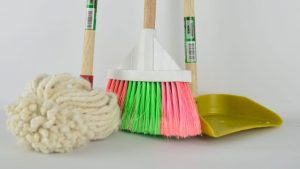This post was last updated on August 12, 2021 by Preethi Sukumaran
Ignorance, in the case of Indian textile crafts is certainly not bliss. As I put together this series on textile crafts and the sustainable fabric tradition of India, I am continually amazed at how rich, varied and wonderful our textile traditions are.
I am also angry at the myopic school system that I studied in: none of this made its way into our curriculum, and was only offered at an advanced level in college or as a part of a Masters Programme. This compounded ignorance led me, in my early working days to mass produced clothing which I found in Malls. This clothing was not really cheap, but it was easily available, and seemed to be the norm around me.
Today, when I see power loom fabric being passed off as handloom, and synthetic dyes and screen printed fabric ruling the roost, I remember my time as a young working adult, making financial choices, and realise my choices have created the word I see today.
As I reached out to textile enthusiasts and people passionate about handlooms and crafts, I found a world of information, environmental sustainability and beauty just around the corner. And I’m happy to see the Krya blog hosting this information.
We are happy to share this guest post written by Richa Dubey on the textile traditions of India and how different types of weaves and fabrics exist for the different seasons in India.
Richa wears many many interesting hats. She conceptualised and runs a gender activism campaign ( see www.bitly.com/GurgaonGirlcott ); leads public affairs for a prospective national innovation university; built an advocacy strategy for the International AIDS Vaccine Initiative’s India office; anchors a breakfast show on national television and manages an international world music festival.She also leads the marketing practice at niiti consulting a for-profit social enterprise consulting firm. She is a passionate believer in environmental, social, cultural and economic sustainability (which is why she works at niiti). Her life is currently ruled by her children (one each, canine and human) her work and her passions (and all of them intersect, so it’s fine)
We are especially proud that Richa is a passionate Krya consumer, and that is how we came to meet her and know of her work.
Here is Richa Dubey’s lyrical, eloquent piece on how Indian textile crafts offer different fabrics for the different seasons of India.
How often have we heard of the diversity in India? Its climate, food, culture, philosophy (in the 6th century BC there were at least 200 different schools of philosophy that co-existed). One example of this rich diversity is textile. Marvellous in its variety, texture, fibre… not forgetting the textile techniques that embellish a fabric, there is possibly a traditional textile that exists for every single occasion in your life, though we shall limit ourselves to the seasons in this piece.
However, before embarking on this journey through the warp and weft of India, where a common thread of understanding runs through the land, it is important to touch upon, at least briefly, the reasons why it holds such an important place in our lives.
Right from the philosophical to the everyday, the understanding of fabric has been intrinsic to the understanding of India. The Rig Veda pictured the universe as a cloth woven by the Gods – the cosmos an infinite length of fabric with its warp and weft constructing a pattern upon which all life is painted.
Much later, Kabir, the 14th Sufi poet-saint (who was also a weaver) likened the Absolute to the divine weaver and our souls to a pristine scarf which is sullied by a life of ignorance and sin in “Jheeni jheeni beeni chadariya” (incidentally, this piece by the late Pandit Kumar Gandharv is my favourite rendition)

As with other facets of daily life in India, philosophy and common wisdom spills over into textiles as well. Just as Ayurveda advises the eating of fruits and vegetables in season, it makes sense to pick traditional textiles according to the season as well.
Beyond being weather-friendly, these natural weaves and techniques also reflect the changing moods of the year and incorporate festivals into their lexicon.
The essence of Spring
Beginning with the season of Spring which takes the first place in the time-honoured Indian cycle of seasons, we see it blooming in textiles as an expression of eternal rejuvenation. Vasant is the season of rejuvenation of cosmic energy. It stands for new beginnings represented by fresh blossoms. It is also the time when Kamadev releases his flower-tipped arrows of love.
The essence of Spring has been captured in the repertoire of Indian motifs known as butis, butas and bels. Different regions of India have interpreted these motifs according to their own aesthetic sensibilities. While the Bagru tradition from Bagru in Rajasthan is famous for floral designs in dark vegetable colours, the Kalamkari tradition from Macchlipatnam interprets them differently. In North India where Mughal influence still lingers, they take on a stylized air in gracefully drooping flower-pots. From whichever region, whether painted, embroidered, hand-block printed, or more recently, screen printed, they form an integral part of the Indian design lexicon.
One of the most popular motifs which are symbolic of eternal Spring, is the Tree of Life. Although not native to India, it has been a symbol of life, fertility, livelihood, food and protection for centuries.

Thus, when Indian crafts persons or women at home sought to embellish textiles it was natural that the tree motif was often embroidered, woven, printed and painted on fabrics.

Its symbolism has been shared in ancient cultures across the world and the tree motif has found expression, both in natural and stylized representations, in varied art forms. At another level the tree is a representation of the Great Mother Goddess. The physical and metaphysical source of life was considered to be manifested in the life-giving powers of the earth and the feminine body, which the Tree is said to symbolize. And there is perhaps no better a time to celebrate this form of fertility than the season of spring, when there is an abundance of blossoming life forms.
The summer begins
The fragrant breeze of Spring gives way to the scorching wind of the summer – the loo. People venture out only when absolutely necessary and then, clad themselves in the lightest fabrics possible. The thread of seasons weaves into fabrics like mulmul, jamdaani and kota…
The quality of the fine muslins of India was probably best described by the Sufi-poet Khusrao in the 14th century. “One would compare it with a drop of water if that drop fell against nature, from the fount of the sun. A hundred yards of it can pass through the eye of a needle, so fine is the texture…” So sheer was this fabric (woven in counts of 2000) that the Mughal emperor Aurangzeb is said to have berated his daughter for her indecency in appearing unclothed before him. The daughter responded that she was wearing seven layers of cotton mul!
According to Laila Tyabji of Dastkar, What is unique about India is that it transformed cotton from being a kind of a village fabric in to something that kings and emperors and queens… not just in India but all over the world used.
The most prized muslins were woven in Dhaka and were so coveted since ancient times that Roman texts blamed the vanity of Roman women for emptying Roman coffers of gold for Indian cottons. Some of these were especially reserved for the use of royalty. In fact it was these same muslins that drew the British to Bengal . The picture below is a depiction of a Bengali girl clothed in layers of fine Dhaka Muslin.

Bengal was also home to a special muslin weave – this was the jaamdani – the ethereal weave which uses an extra weft and gives the motifs the appearance of floating on the ground. Jaamdaani lives even today as the fabric of choice for the humid summers of Bengal. UNESCO has declared the art of Jaamdani weaving as an Intangible cultural heritage of humanity.

But despite the historic and near cult status of the Jamdaani weave, the Jamdaani weaver has no financial motivation to continue creating this textile art. A senior taanti or “ostad” earns about Tk 2,500 to Tk 3,000 per month. Junior weavers get much less, around Tk 1,600. As a result many weavers do not want their children to come to this profession. For many, the Bangladeshi garments industry, despite its several dubious practices and poor working conditions, is a better alternative to this craft.
Summer in West India
Beyond the East, the western part of the country also devised its own textile strategies to cope with the heat. A charming, but probably apocryphal story tells of the development of Kota. Kota which is now known for its coaching centres devoted to getting students into IIT also has a special place in India’s fabric tradition.
The story goes that a hill princess married into the royal family of Kota. But much as she tried to bear up under the fierce heat of the Thar Desert, she wilted under the heavy, coarse fabrics that formed the traditional garb of the region. Finally, unable to bear it any longer, she commissioned the local weavers to create a light fabric for her. The weavers wove the lightest, airiest fabric that they could – the princess was still not satisfied. Then they pulled out the threads from the warp and the woof at regular intervals to create a lacy chequered fabric. This grid-like ethereal fabric took the eponymous name of Kota.

Initially these were woven only in the seven shades of white prescribed in the Vishnu Purana: – light white, tooth white, pure sandal white, autumn cloud white, autumn or sharad moon white, conch shell white and motia or pearl white.The texturing of the fabric was done by the simple expedient of varying the number of threads and the shades of white in the warp and weft of the grid giving it a subtle sophistication.
Today, however, Kotas are available in various colours (and regretfully, synthetic yarn too) and remain a popular summer option.
This post continues tomorrow with Richa describing the fabrics that were woven for Monsoon and winter.
If you want to get a more local, and environmentally sustainable wardrobe, start reading here:
- Our introductory post on the sustainable fabric series
- On the One Person Satyagraha and why you should start one
- On the environmental and human health hazards of chemical dyes
- The primer to sustainable Indian fabric is here
And do tell us what you think of this new series here or on our Facebook page.




